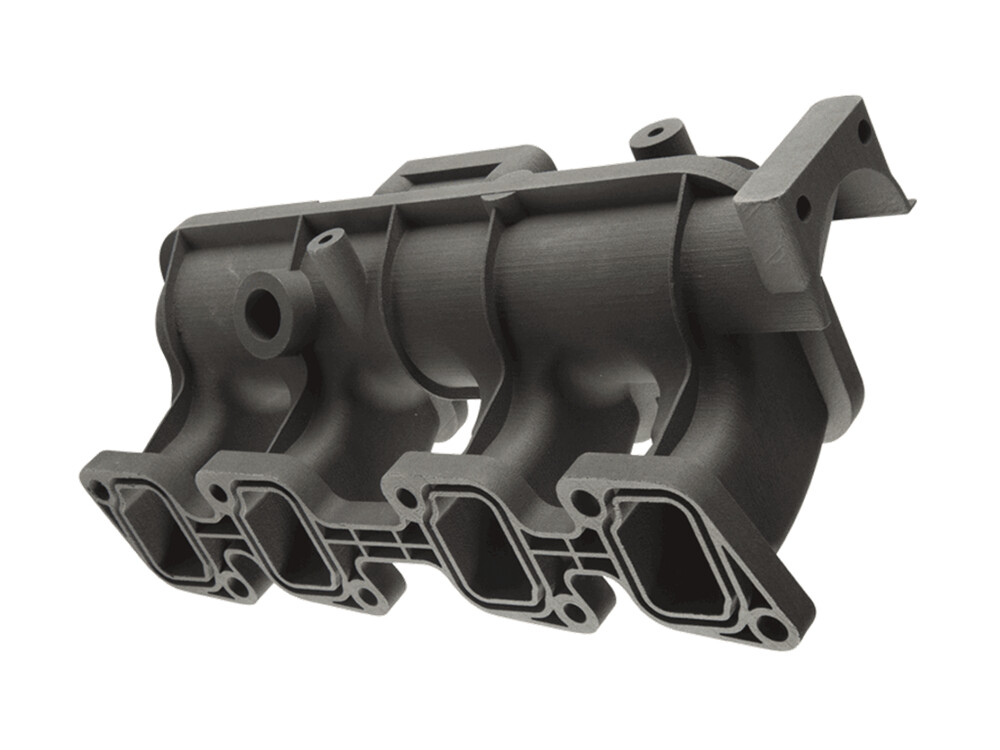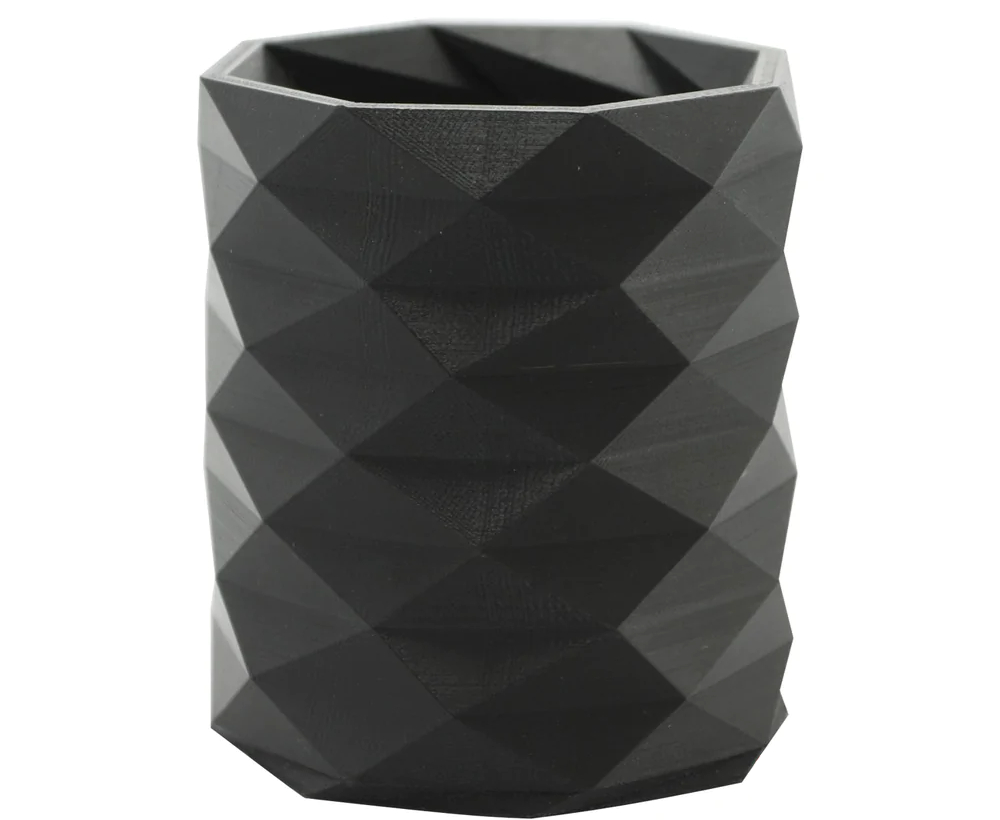FDM PolyMide Nylon PA12-CFPolymaker PolyMide PA12-CF PolyMideŌäó’ĖÅ PA12-CF is a carbon fiber reinforced PA12 (Nylon 12) filament. Thanks to the low moisture sensitivity of PA12, this product features outstanding mechanical and thermal properties even after the moisture conditioning process. Combined with its ease of print with Warp-FreeŌäó’ĖÅ technology, this product is ideal to create manufacturing tools. Max Build Size Min Build Size 8 x 8 x 8 mm Default Layer Height 0.18 mm Optional Layer Heights 0.1, 0.2 mm Tolerance ┬▒0.2% (with a lower limit of ┬▒0.2 mm) Up to 105 Ōäā Smooth ŌśģŌśģŌśģ Detail ŌśģŌśģŌśģ Accuracy ŌśģŌśģŌśģ Rigidity ŌśģŌśģŌśģ Flexibility ŌśģŌśģŌśģ Available ColorsBlack
Available Post ProcessSuitable For Functional prototypes and end products, Not Suitable For Complex designs with intricate details, Additional InfoPolyMideŌäó is a family of Nylon/polyamide based filaments. Produced with PolymakerŌĆÖs Warp-FreeŌäó technology, PolyMideŌäó filaments deliver engineering properties intrinsic to Nylon and ease of printing. PolyMideŌäó’ĖÅ PA12-CF is a carbon fiber reinforced PA12 (Nylon 12) filament. Thanks to the low moisture sensitivity of PA12, this product features outstanding mechanical and thermal properties even after the moisture conditioning process. Combined with its ease of print with Warp-FreeŌäó’ĖÅ technology, this product is ideal to create manufacturing tools.
Feature
3D PrinterMaterial Spec Sheet
Fused Deposition Modeling is used to build your design with this material. The principle is simple. You can compare it with a hot glue gun into which you put sticks of glue. The glue is heated up until it melts and is then pushed through a fine nozzle in the front of the glue gun. In an FDM printer, a long plastic wire is used in place of glue. It is fed from a spool to the nozzle where the material is liquefied and ŌĆśdrawnŌĆÖ on the platform where it immediately hardens again. The nozzle moves to drop the material at the correct location, drawing your model line by line. When a layer is drawn, the platform lowers by one layer thickness so the printer can start with the next layer. When your model contains overhanging sections, the printer needs to build supporting material. Since the material of the model cannot be deposited in the air, the support material prevents it from falling down. This support material is fed through another nozzle. Afterward, when the model is put into a bath with special soap, the support material dissolves.
|




